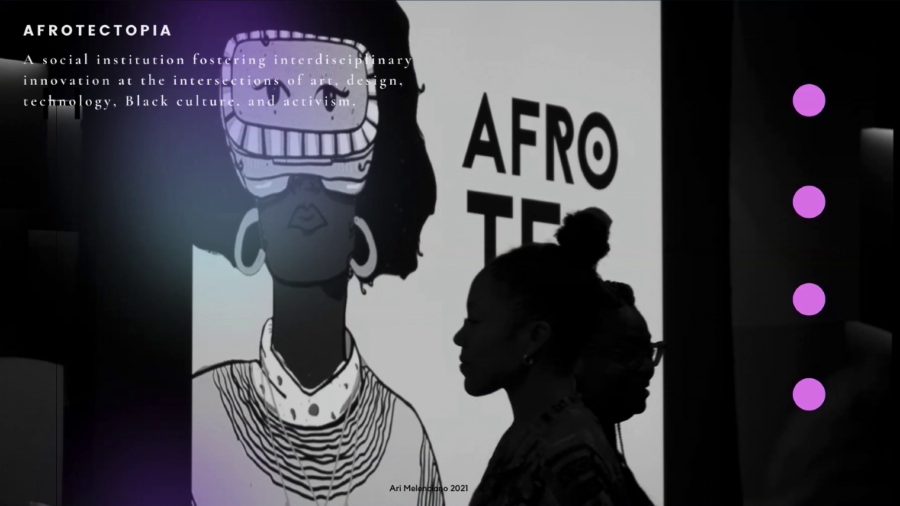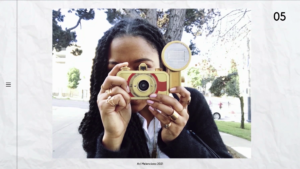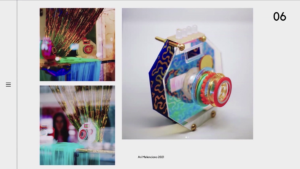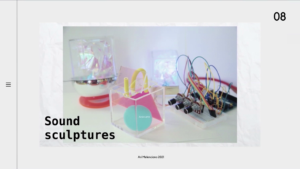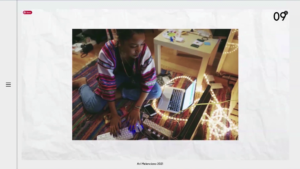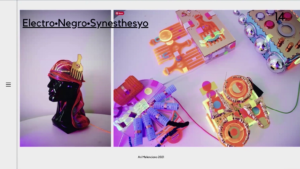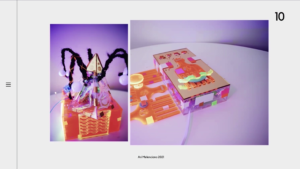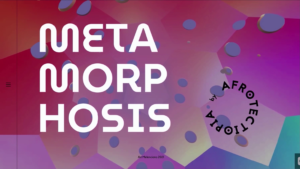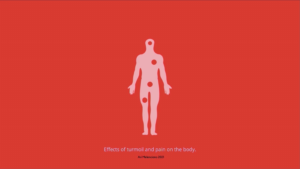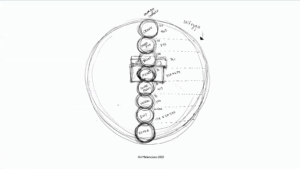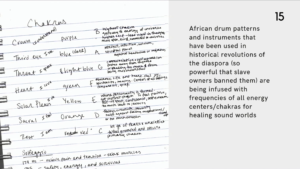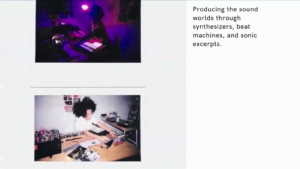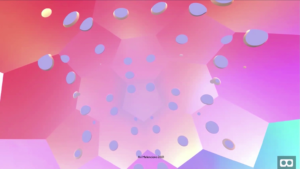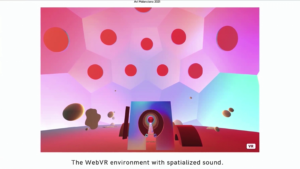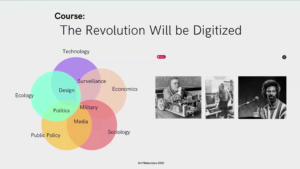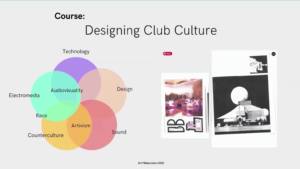Golan Levin: Good afternoon, everyone. It’s our Friday afternoon session of Art && Code: Homemade. I’m Golan Levin, directory of the Frank-Ratchye STUDIO for Creative Inquiry at Carnegie Mellon, and director of the Art && Code festival. And it’s my pleasure to introduce the beginning of our Friday afternoon session. We’re going to have three presentations by Ari Melenciano, Sarah Rosalena Brady, and Imin Yeh.
And just another quick announcement. There has been unfortunately a cancellation at 5:30 this afternoon. Olivia McKayla Ross has had to cancel, we’ve just learned. So there will be a gap at 5:30. We will talk more about that when we do the evening session. But we will still have Leah Buechley and Nanibah Chacon at 5:00.
So, with that it’s my pleasure to introduce Ari Melenciano, who is an artist, designer, creative technologist, researcher, and educator whose research combines approaches from human-computer interaction, Afrocentric design practices, and experimental pedagogy. She is the founder of Afrotectopia, a social institution fostering interdisciplinary innovation at the intersections of art, design, technology, Black culture and activism. And she currently teaches creative technology and counterculture at NYU and Pratt. Ari Melenciano.
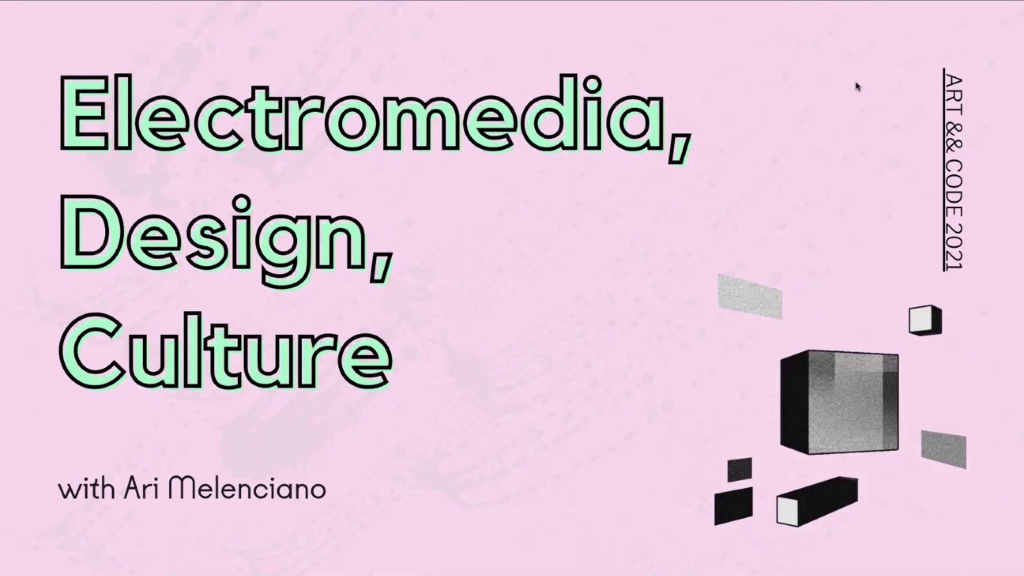
Ari Melenciano: Thank you. Thank you for having me. Very excited to be here, and I will talk quickly because I usually put in too many slides in my presentations. I know we’re on a quick timespan. So, I’ll be talking about electromedia, design, and culture, which is where a lot of my work lies.
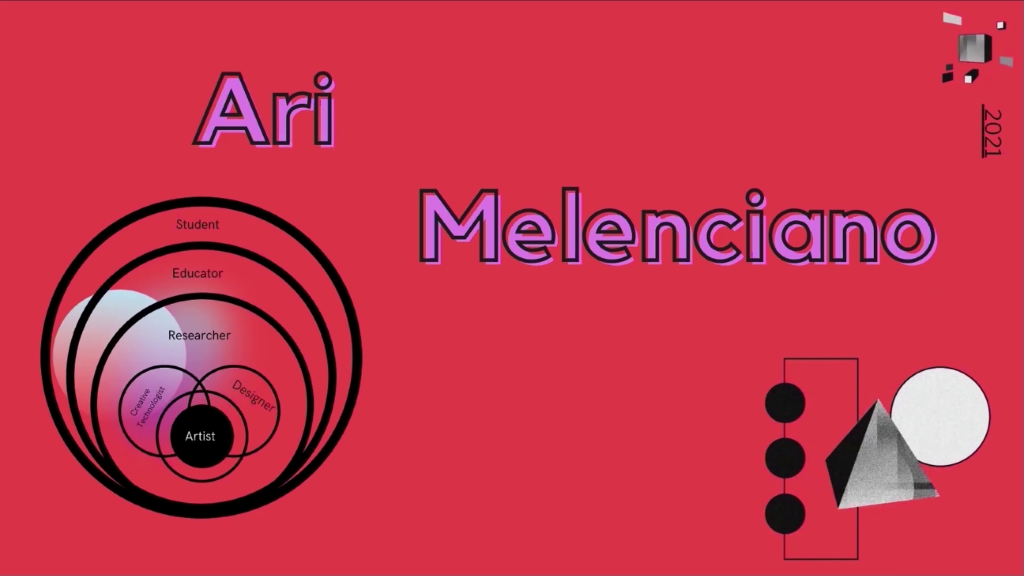
So again I’m Ari Melenciano, and at the core of who I am as far as my practice I’ve always identified as an artist and have found that design and creative technology are really great vehicles for me to use to continue expanding the possibilities of art. And a lot of my work is built off of research so I’m constantly engaging in research and studying different facets of the world. I often turn all of this work into classroom environments. I teach a lot at different universities and in being a teacher I feel like I’m always fortunate enough to be a student to continue to learn from the students that I have.
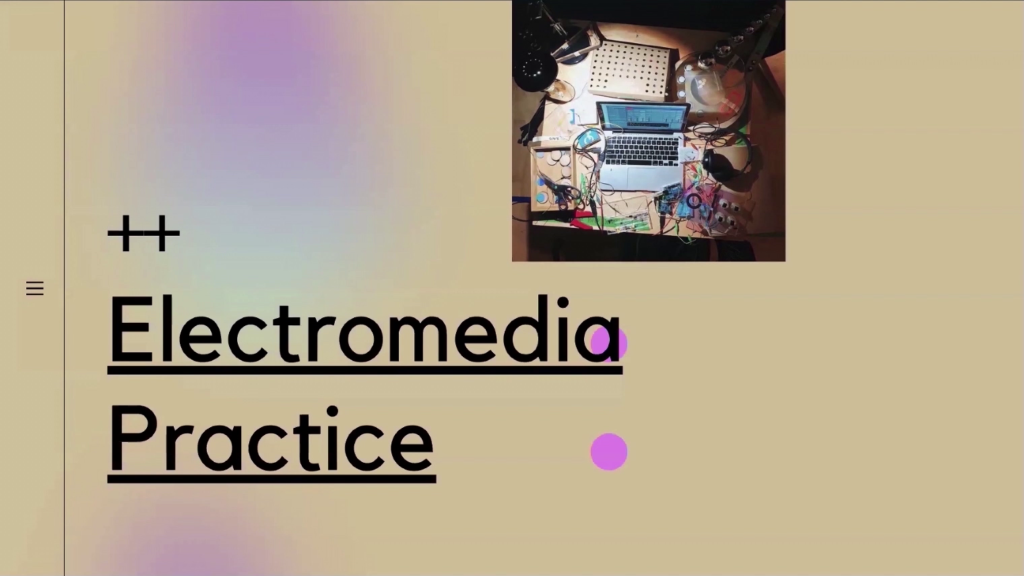
So, with my electromedia practice, it spans a lot of different mediums but it generally started from a project called Ojo Oro, which I created while a graduate student at NYU’s Interactive Telecommunications Program. And this was a dream project for me because I grew up as someone that loved photography and taking pictures and documenting moments, but also having a really beautiful experience with digital photography but an even more beautiful experience with analog photography. And I wanted to create something that kind of blended both of those worlds.
So in being someone that just loved the aesthetics of different cameras, especially film cameras, I feel like there’s a lot more attention to the craft and the design of them versus digital cameras, at the time. Now digital cameras are trying to mimic the aesthetics of a film camera, but at the time they were like these kind of bulky machines. And so I wanted to create something that kind of had the best of both worlds in that it was operated digitally, but it mimicked a film-like experience. So with this camera, people would use it, it would take digital pictures, and it would— And it was also thinking about fashion, of it being a sort of wearable device. You’re wearing it around your neck so why not have it be something that’s complementary to your outfit.
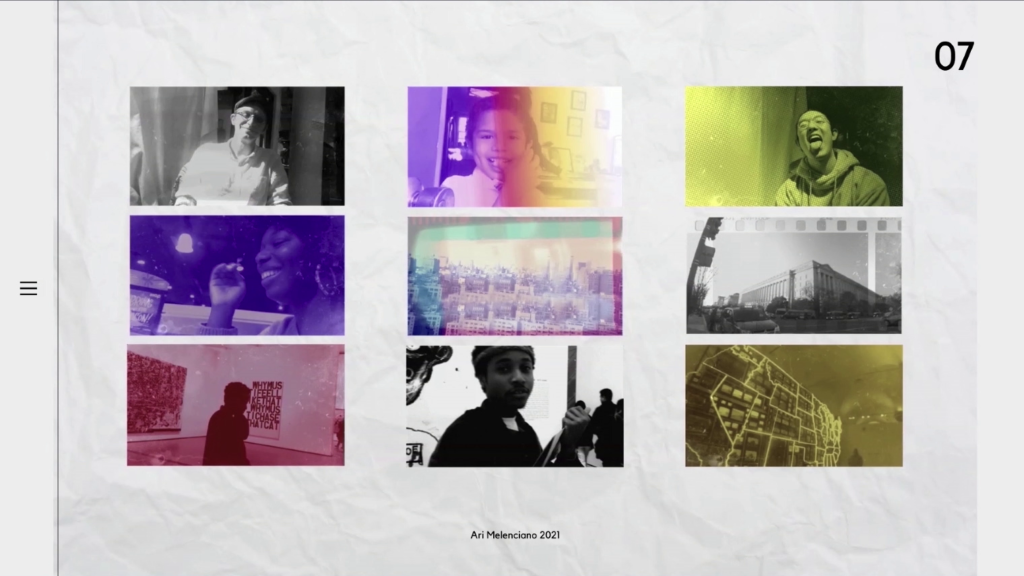
And then these are the different photos that it would take. So it’s digital but it’s randomly applying film-like filters onto the photos to create the sort of distortion and colorfulness. And that’s where the name Ojo Oro comes from, which is Spanish for “golden eye.” It was meant to be a tool that allows you to realize your artistry in a way where you’re not scared of the end result. There’s no mistake or error. It’s purely just…everything that comes out of it is something to be treasured.
And so then I continued expanding on that work in creating sound sculptures, and being really excited about how music could be created in new forms. And so I would create these sculptures that would allow people to engage them and turn different knobs, and that would then change the frequency or other forms.
And so that continued to expand in the form of a more recent series of work or body of work as far as sound sculptures, in the name of the Election·Negro·Synesthesyo. So this is a compilation of different sound sculptures that are all rooted in Black cultural artifacts. And so being obviously a Black person and loving Black culture and all the different artifacts that we have in it. But also very attentive to the fact that a lot of different Black cultural artifacts when worn on Black bodies have a negative stigma to them, and they’re seen as something negative stereotypically, and unprofessional or whatever it is, specifically when worn on a Black body but when worn on other bodies it’s seen as trendy or cool.
So, for me I’m thinking a lot about what is the future of Black culture outside the white gaze, where it’s able to express itself and define itself on its own terms. So through this I’ve created these sound sculptures where I’m using these different cultural artifacts that have such negative stigmas, but recontextualizing them and placing them in a sort of future. Whereas people engage with them and they’re sound interactive, they then are able to enter this new world. So in touching things like the hair rollers, or the do-rag, or the bamboo earrings, you hear new sounds—or even in touching the braids, you hear them play sounds in response to it.
And I’m also thinking about there’s this notion that you should never touch a Black woman’s hair or a Black person’s hair, period. It can often be a very degrading act. But I’m thinking what if it wasn’t because it was degrading but more if it’s because you know, the being, the Black being is too magical to touch? But if you do touch it you’re entering this new world. So in creating this artifact I was exploring that.
And then as you change the different afro picks, it’s not a sound tool it’s actually— I’ve embedded this sort of digital DNA inside of each afro pick. So as you change the afro picks on that bed, it then changes the visuals that would be projected on the wall.
Another more recent project is Metamorphosis. I created this during the summer. And just hearing the sounds of protest non-stop all throughout the summer and wondering what is everything that we’re going through doing to our bodies. And so thinking a lot about healing modalities, and digital healing modalities, with us being in a remote era.
So how turmoil and pain affect our body, thinking about that scientifically and spiritually. And so I wanted to create a space that was also thinking about epigenetics. Epigenetics is an experience that your body has without you physically having it. It’s an ancestral sort of experience that you have that’s embedded within you. And so when we’re constantly going to these tragic experiences, that’s altering the way that we navigate through the world in our DNA. So I wanted to think of is it possible to have a reversal of those negatives epigenetics and create a positive epigenetics, and do that through sound and color.
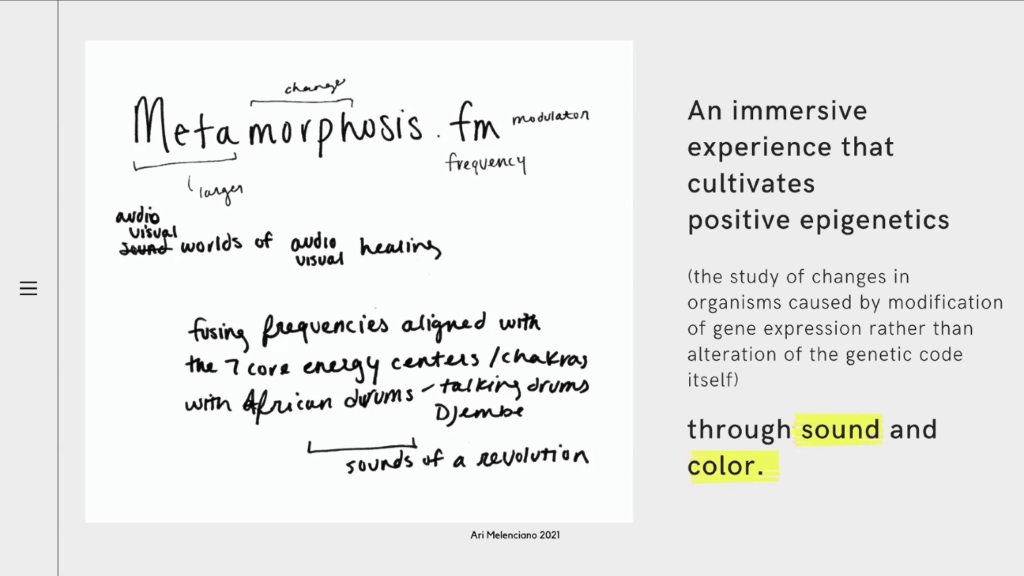
So with this, called metamorphosis.fm, and that it’s a change. It’s a larger change within our DNA structure through frequency and the modulation of frequency creates this experience where as you enter this space and listening to different sounds that tie directly to different energy chakras, those would then potentially do some sort of a reversal of the negative genetics.
And so I did a lot of research in studying sound and how that impacts the body and studying its relation to different chakras or energy centers. And then also had known about African drum pattern music and that having been a tool to carry Black people and African people through Pan-African revolutions through drum sounds. So I wanted to blend both of those to create this audiovisual experience. And so thinking also about the architecture of the space and moving through it, and the psychogeography and curved walls allow for relaxation and calmness. And so using those tactics inside of the space and then in being a sound artist, creating all the music and blending it all together and producing it to create this environment which I designed in Cinema 4D and then exported into a VebVR environment, where also thinking about again psychogeography of higher ceilings, these are things that we often experience when we’re in a cathedral or a space of such significance.
So also placing that inside of this space so you feel like you’re in a place that’s really important. And then as you navigate through it you feel like this cyclical kind of relationship between you and the sound and the environment as you move through an enter these different sphere areas.
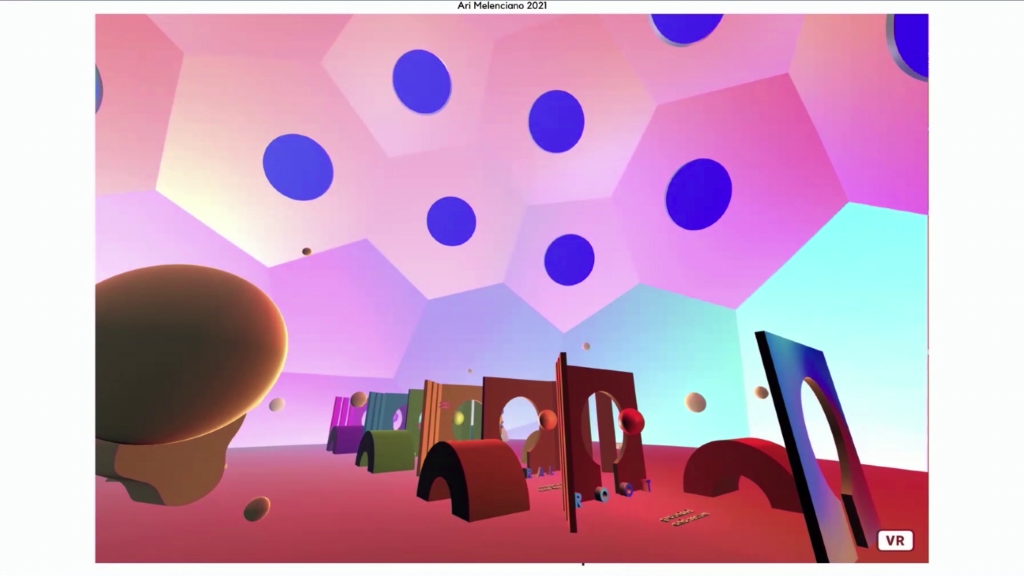
And then each section has its own music that’s being played in that area alone. And each of those areas are designated for each of the different energy centers.
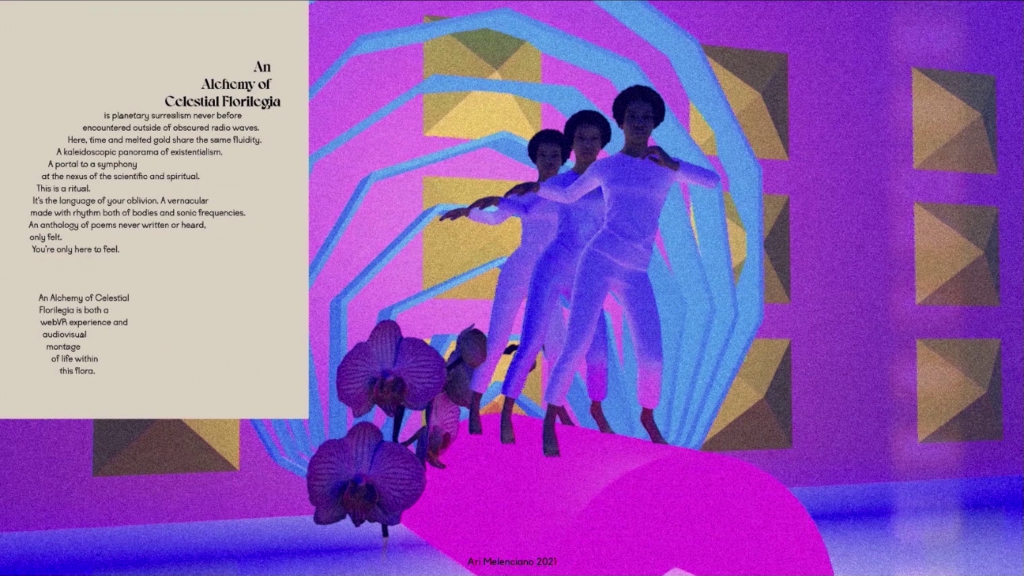
And continuing this I’ve been exploring a lot about creating in WebVR and virtual environments. And this is a more recent project that I’m still developing that I’m presenting at Sundance this year in their online environment. It’s called An Alchemy of Celestial Florilegia. And so this is thinking about time being a very spherical thing. It exists and there are alternate realities, and this idea of existentialism and what does it mean to exist. What does it mean to understand language outside of the written or oral kind of passage of language. And so it’s a huge montage. Just generally like a surrealist and existentialist kind of understanding of the world.
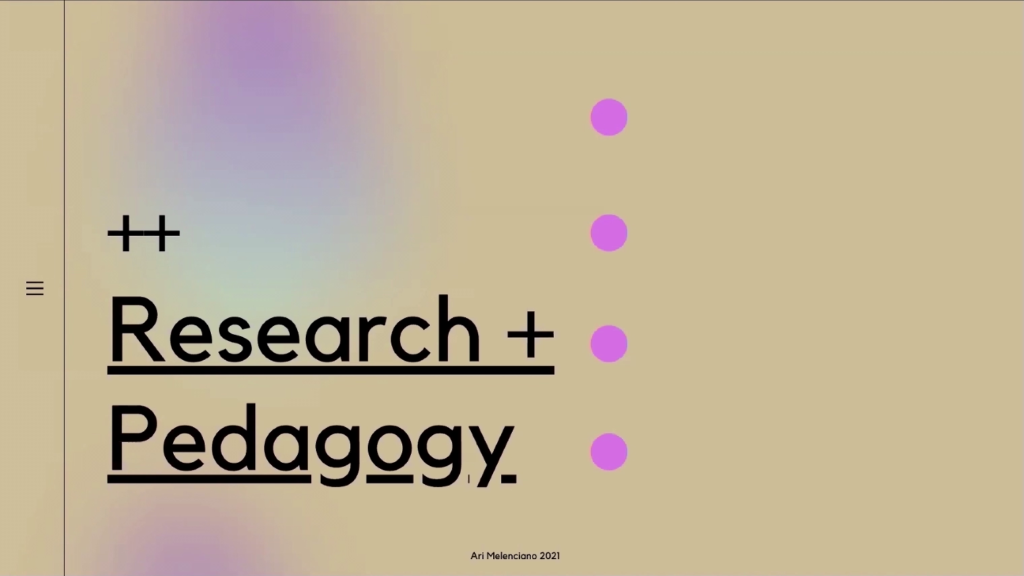
And so I’m gonna move even quicker through this research and pedagogy and then go into Afrotectopia so that we can go into a Q&A.
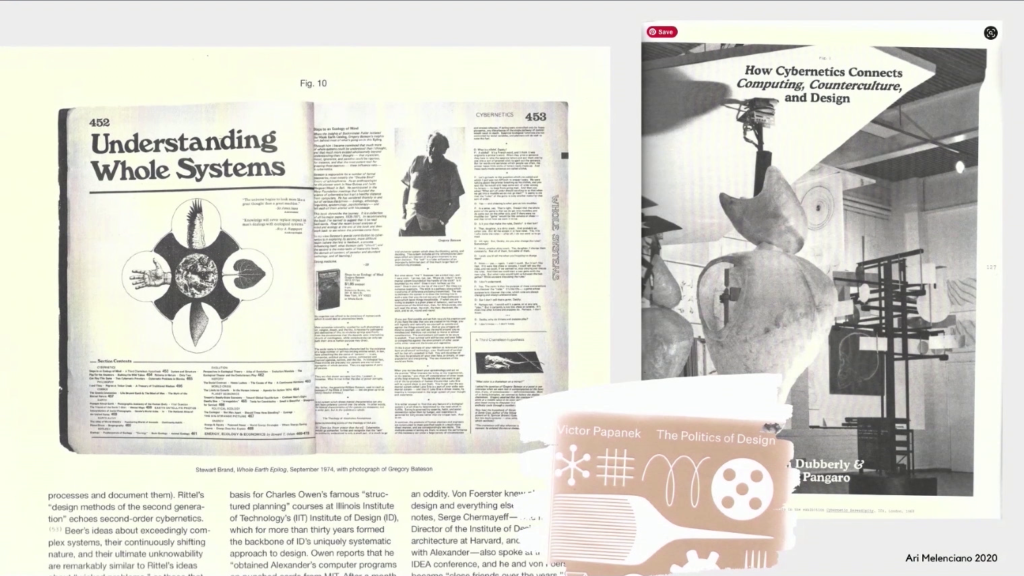
So as I mentioned, a lot of my work is built off of research. And I really enjoy researching and understanding what people have done in the past and using that as a tool for designing futures. So a lot of my work is very interdisciplinary, which I found a lot of similar relationship in my work as people like Steward Brand and Victor Papanek had in their own work of being very whole-system thinking. Of not focusing strictly on one facet of life but thinking about a lot of different parts of the world and how they all have a relationship between each other. So, things like the Whole Earth Catalog and Victor Papanek’s work on politics for design have been really great resources for me.
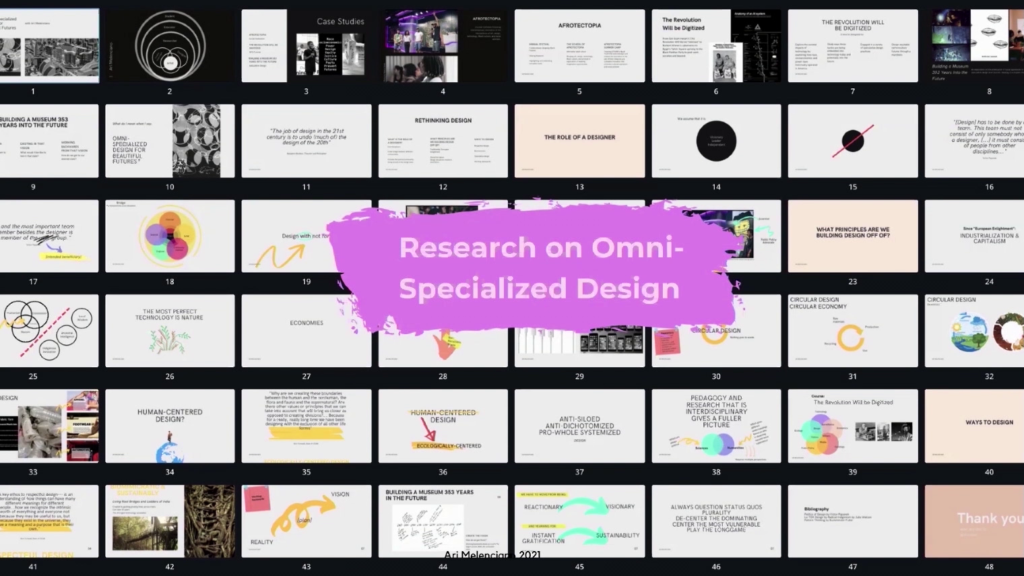
And oftentimes when I’m engaging in this research in omni-specialized design I’m outputting in the form of a presentation like this, where I’ll talk about a lot of the different areas that I’ve explored and how I’m bringing them all together.
Or they will take the form of courses. So I design courses at NYU and teach them. And a few of them have been The Revolution Will Be Digitized, where we’re thinking about technology but in a holistic and comprehensive form where it’s not just about computer science but it’s about economics, and sociology, and public policy, and ecology, and media, and military. Or with Designing Club Culture, which is kind of the flip side of creative technology or electromedia in that it’s not entirely about the social impacts of tech in a negative kind of way, but more of what has been allowed to exist because we have had access to electromedia? So how counterculture movements have used technology through various forms to create these kind of disco scenes and then people have been able to champion and realize their own kind of utopias within these spaces.
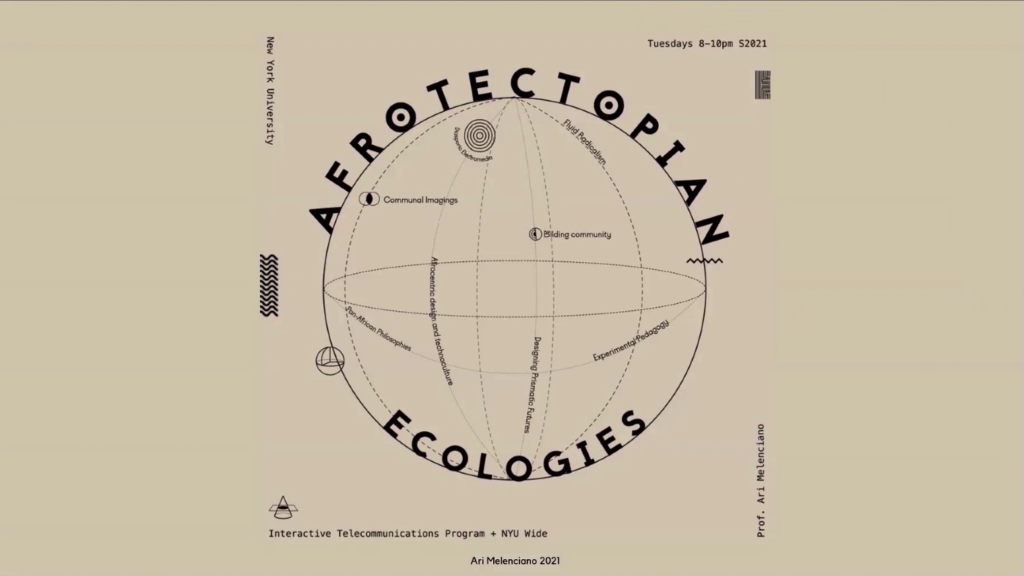
And a more recent course that I’m teaching is called Afrotectopian Ecologies, which is also a very interdisciplinary kind of approach of combining a lot of different areas of research that I’ve been exploring and kind of putting them all together into a course where we’re understanding so many different aspects of the world but within a few weeks.
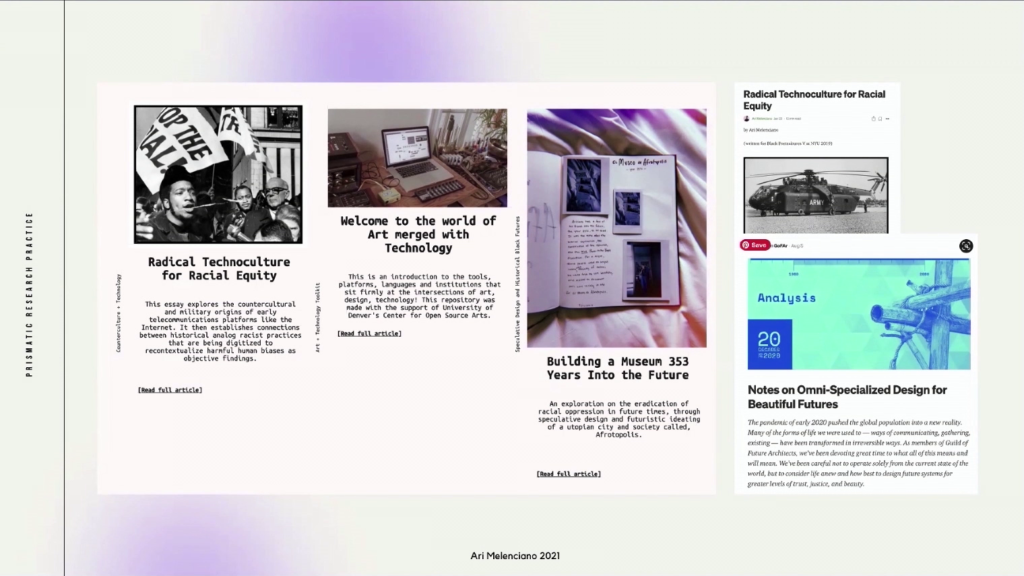
And then the research also takes forms in writing essays. So I’ll publish essays online about things like radical technoculture for racial equity, or building a museum 353 years in the future, or a whole essay on omni-specialization in design for beautiful futures.
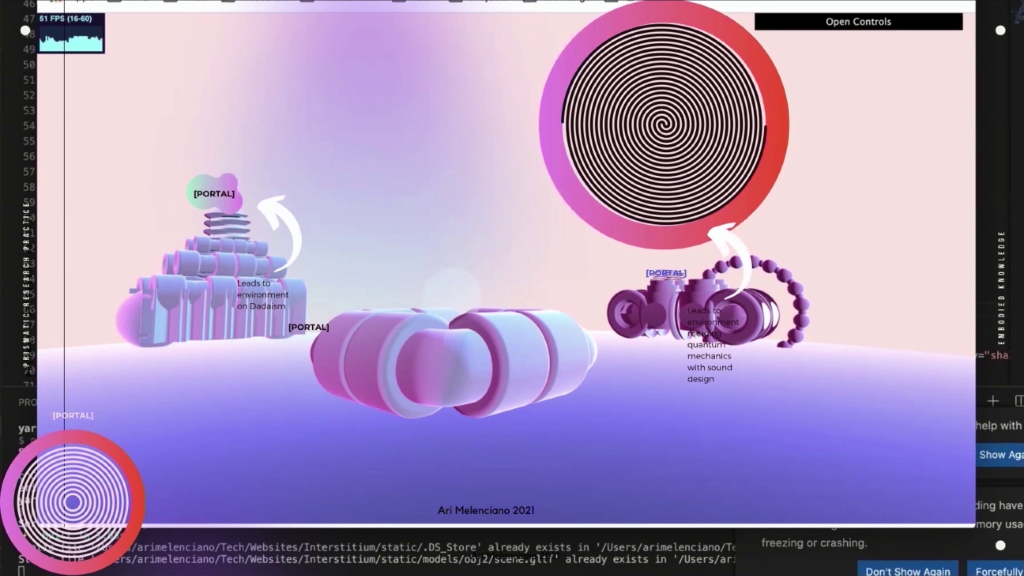
And so what I’ve been working on and what I’ve had the support over the past summer with Eyebeam as a fellow and now going into this new year with the support from Onyx in their new kind of new media, virtual reality space and membership kind of thing with the New Museum is thinking of how can I translate all of this research into a virtual environment where I’m thinking about the architecture. Not only information architecture but also the architectural kind of renderings of the space in the digital space. So thinking about the Internet not so much as a tool—it’s a linear tool of you get from point A to point B—but moving away from that and allowing for spontaneity and exploration, and not as a linear tool but an explorative tool. And so as you enter the space, you would then find different portals that are leading you to environments that have information on a variety of different ideas like quantum mechanics and sound design, or environmentalism and Dadaism.
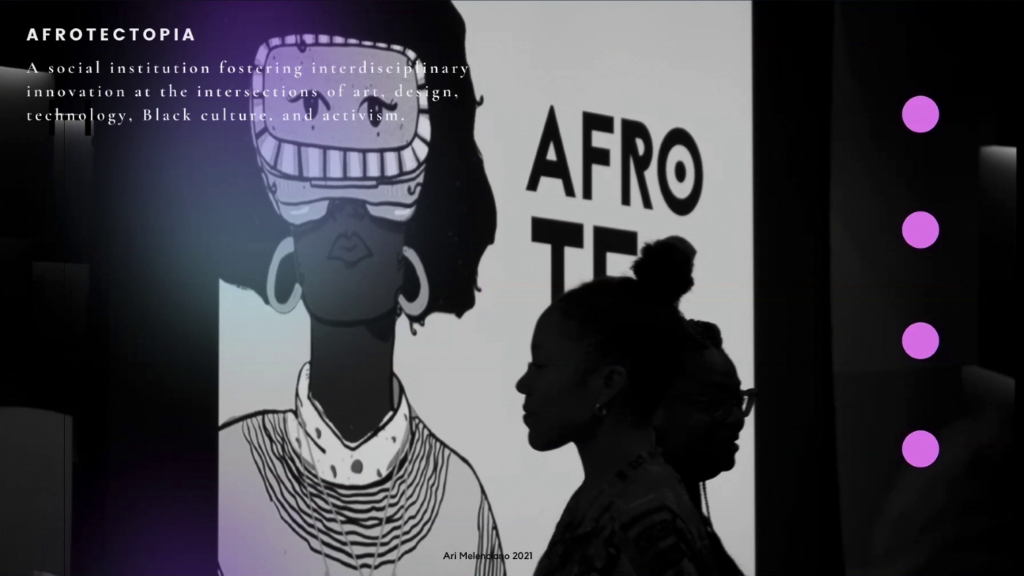
And so that’s a more recent work that I’m building out and working on. But I’m also as the founder of Afrotectopia thinking a lot about not only virtual digital environments but also communities of people, and how we can create spaces that cultivate imagination and creativity and stimulation—artistic simulation and design stimulation.
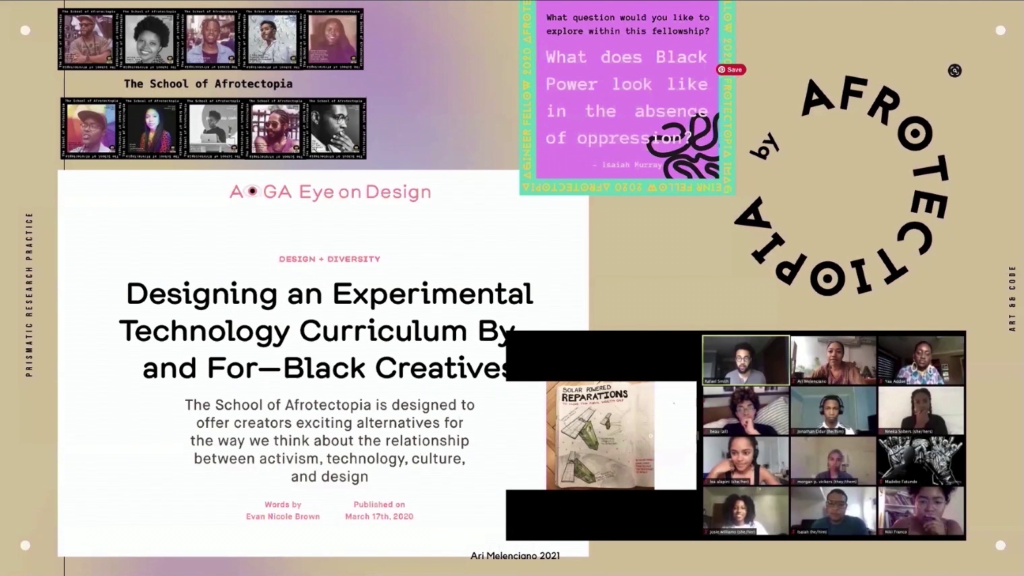
And so Afrotectopia has taken the form of a lot of different things. It started off as a new media festival while I was a graduate student. I created it there. And it has expanded into being an alternative adult school. So last year we held ten different classes hosted by Verizon Media. We also had a more recent festival we had last year at Google. And this year we’re in the midst of a four-week-long alternative adult school called Fractal Fête which is thinking a lot about a whole bunch of ideas around art, design, Black culture, technology and activism. And we also just wrapped up an international cohort fellowship where we were thinking about ways that we can use technology and design and art to mitigate racial disparities and create these new worlds.
And so with Fractal Fête, which is happening right now, we have twenty different amazing and brilliant Black presenters and Pan-African presenters, and the space is open exclusively to Black and Pan-African people, where we’re just giving each other the space to explore process and understanding the behind-the-scenes for different creators and the things that they’re thinking about, and have this kind of open dialogue so we can get to know each other and build with one another and explore new possibilities.
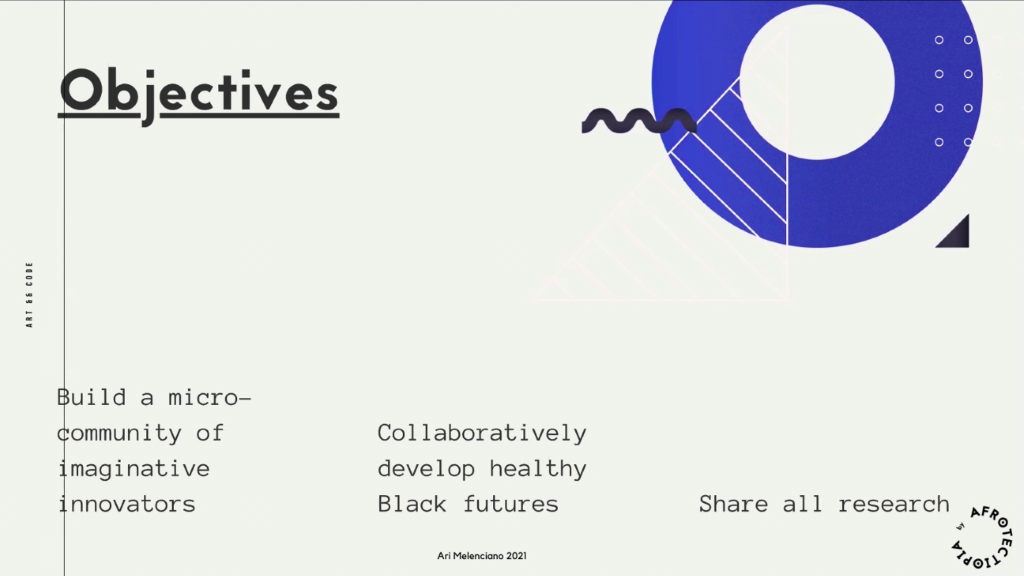
And so generally the work with Afrotectopia has just been to build a micro-community of imaginative innovators. So it’s really important for us to have spaces where we can come together and explore and imagine, and to collaboratively develop healthy Black futures where we’re not leaving that responsibility to other people but we’re taking the agency with our own hands and designing it for ourself.
And to share all of our research. It’s really about being as open source as possible and making sure that anyone that doesn’t have access to our space or our community in person or virtual can at least have access to the work that we’re building.
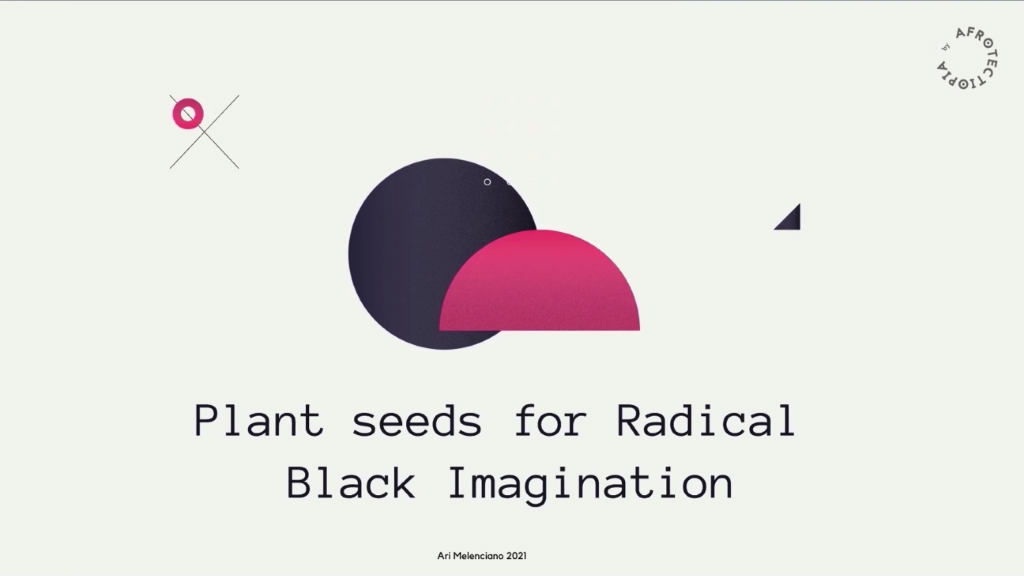
And the biggest and the most important thing has been to plant seeds for radical Black imagination. So, how can we create spaces for people to just imagine, and dream, and place themselves in the future and work backwards from there and create new forms and really lean into their agency.
So I think I actually talked a little too fast. I was worried about time. But that’s where I am, so we can maybe have a longer time for Q&A.
Golan Levn: Hey Ari, thank you so much. This is great. We do have oh, probably five to ten minutes for for Q&A. So I’ll pull from from the Discord. I’m juggling a couple of computers here.
But maybe the first question I have for you just is to think about, in the festival Art && Code: Homemade, sort of what we were thinking of by homemade—and the curatorial advisors were also talking to me about this, was not just necessarily homemade like you know, apple pie or something like this, but really that one would be making technologies for different audiences. Perhaps in gift cultures or you know, technologies that one would make for oneself, one’s friends, one’s family, one’s community, maybe even one’s ancestors. And I wonder if you could speak to that notion of who the technologies are for in your thinking about Afrotectopia and its trying to sort of instill or create a space for Black technological imagination. Is this about helping create Black innovators who’re going to make technologies that are going to be mass-produced, or is it about sort of helping people create technologies for themselves and their friends and family? Or is it sort of all of that? How do you imagine… Who consumes and produces the technologies from these?
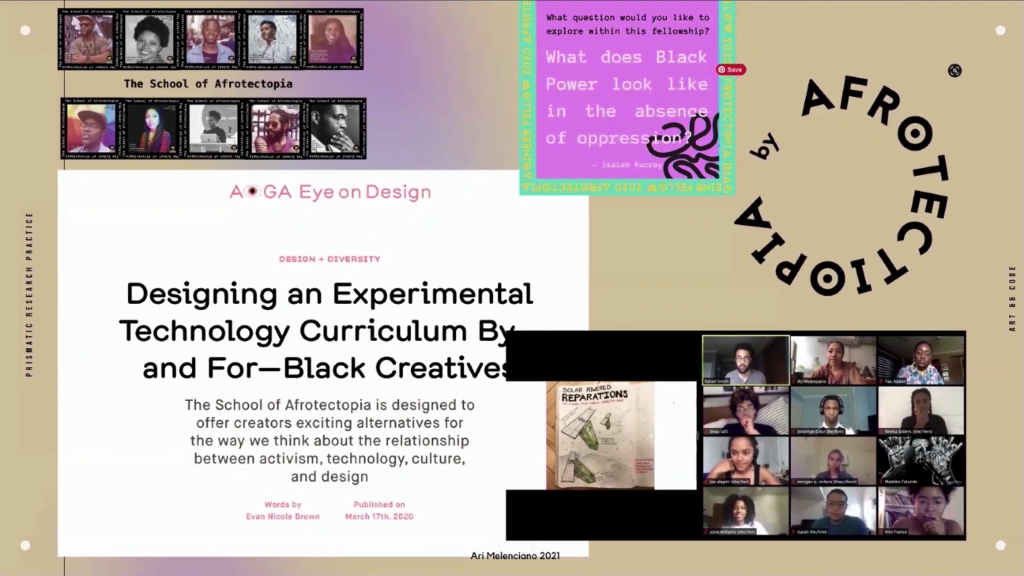
Melenciano: Yeah, I think it’s really also one thing that I started off the fellowship with. You see the fellows in the lower-right corner. It was grounding the work and making sure that they understand what Afrotectopia stands for. Which is one, that we understand and we believe that technology is merely an extension of human capability. So I think we definitely to get away from this idea that technology is synonymous with computing, and digitality, like it has to be in the electric form, but it’s simply understanding that technology has always existed around us. And it’s something that’s been innate in things like ancestral intelligence and the way that indigenous people have operated with the land and worked with the land. So I think for one it’s making sure that it’s creating a community that understands their capability and agency, and understands that the way that their ancestors have practiced all along have been what we’ve needed for technology in general going forward.
But it’s also a space where were thinking a lot about not assuming that blackness is a monolith. Because as you can see with the fellows here, the fellows were coming from all over the world for one, and they have a lot of different ethnicities. So one of them was Haitian, another was French, another is Ghanaian. Like they’re coming from all over. And though we have this shared idea of an identity of blackness, we have very different understandings of what blackness means and the ways that we engage in practice with it. So it’s also creating that kind of environment. But yeah, I think “for,” who’s it for? It’s really just for people that are interested in being curious, and exploring, and realizing new potentials and ways to express themselves digitally if they want to, or also outside of digital forms. But it’s really just for people that are just curious and want to learn more about the world.
Levin: Another question coming from the chat is do you have places that you think would be most impactful to share this work, or that you fantasize about like the goal, the holy grail would be to present this work? Like the question says, “Would X audience really get it, or audience Y at this place should really be experiencing this?”
Melenciano: Hm. That’s a really— I don’t think I’ve ever been asked that kind of question. As I present these in all different kind of spaces, I think the goal for me, like what I would love to do in presenting the work of Afrotectopia is to present it to schools that are predominantly Black. Like elementary schools and middle schools and high schools that are predominantly Black in their population. I think that excites me the most. Oftentimes this work I’m presenting in areas that are more predominantly white or something else. So I think for me that would— Because that’s why this was created. I created this because I grew up as someone that loved technology but was never a technologist, was more of an end user. So I never saw myself in the space, at all. So this was created because we need to be able to see each other and we need to know that these are things that we’re capable of doing. And if we had access to it, these are the things that we would be doing. So just being able to see each other is the most important part of it.
Levin: Yeah, something I’ve told the speakers is to give the talk that you would like to see.
Melenciano: Yeah.
Levin: And it’s been said you know, you can’t be it if you don’t see it. And that can mean a lot of things, you know. In one case it’s simply like the kind of way that you work across so may different disciplines. I’ve mentioned several times in the festival, this permission to be hybrid, is so latent and embedded in your work. And to see of course many different kinds of approaches to technology being done here as well.
There’s a question on the chat about what’s in— This is less about Afrotectopia and more about the physical things that you’ve shown. What’s informing the aesthetic choices you’ve made in your physical work? Someone says, “I’d like to hear more about the influences and intentions behind the beautiful visual design language that you have across your work.” Where have you drawn from to make these?
Melenciano: I think uh… Well thank you. It’s a kind question. I think— I’m not sure really where it comes from. I remember being in art school in undergrad and I was always the only one that was using a lot of color and everyone else was kinda using these minimal, monochromatic kind of color palettes. And just having conversations with other people, and even just in my family, I realized that maybe it’s something that’s more Caribbean or whatever. My family is from the Caribbean. I’m Dominican American, so it could be that. Maybe it’s just kind of like a cultural thing that just kinda comes in. Because for me color is really important in creating a space that just feels vibrant. I think it allows people to feel very excited.
But yeah, I don’t know where the other parts come—and I think it’s also just like this ancestral intelligence again, of the things that you kinda do is just stuff that your…it’s just in your DNA, I guess. And for me patterns are really important. I love to blend together different patterned aesthetics and create these new shapes and balance between complexity and simplicity. So, I don’t know. I think it’s kind of a mix of that, just color and patterns are really important to me.
Levin: I think this will probably be our last question. It’s again from the Discord. Oh, there’s a couple. But this one is where and when, or where and/or when, will there be opportunities to experience the Metamorphosis virtual space? And also, following on that, did you incorporate any of the thinking of the work of Dr. Nadine Burke Harris on ACEs, which is Adverse Childhood Experiences?
Melenciano: No, but I’m gonna write that name down. It sounds really interesting.
Levin: It’s in the chat as well. So is there a plan to exhibit, or for people to experience the Metamorphosis virtual space?
Melenciano: It’s live now. You could go to metamorphosis.fm and you’ll be able to move through the space. But in just being asked that question, I’ve never really thought about exhibiting it outside of the web site, but I think that would be a really really really cool opportunity.
Levin: And who are some people who are working in technology for activism, or just other technological approaches that you are intensely interested in or that you feel aligned with, or whose work you admire and that we should look into? Do you want to give shout outs to anyone?
Melenciano: Oh there’s so many. There’s every speaker that’s presenting at Fractal Fête. You could look at that. And yesterday we had Ash Baccus-Clark, and then the day before that we had Onyx Ashanti. So yeah, you could definitely look at that lineup and find a lot of them.
Levin: Thank you so much for sharing your energy and work and objectives with us, Ari. It’s really inspirational and it’s really important work for this kind of thing to happen and for people to see it. It’s lovely seeing you again, and I hope you get to enjoy some more of the festival, too.
Melenciano: Yeah, thank you for having me.
Levin: Thanks. We’re going to take a quick break, and at two o’clock, we will have Sarah Rosalena Brady. So we’ll see you all in a few minutes.
